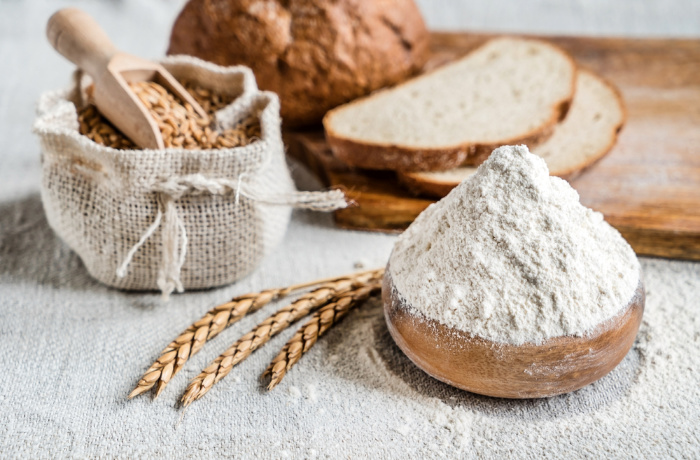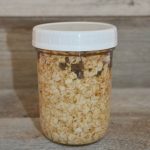
Today it’s all about the 15 foods I would stock for sure. This is a small list, but let’s be real, some people are new to the food storage life. It’s always a smart idea to plan ahead.
The same holds true when you’re trying to provide your family with food on the table after an emergency has already happened. Once SHTF, it’s already too late to start a stockpile of your family’s favorite foods.
Now is the time to stockpile a loaded pantry before this type of situation is to occur. These are 15 foods that I would stock for sure.
15 Foods I Would Stock For Sure
When it comes to something like a quarantine, you never know what to expect. However, this time over the last few weeks has really shown us what we did right and what we did wrong. Here are 15 foods I would stock for sure if I could redo any of this.
1. Eggs
When it comes to protein, it doesn’t get any better than eggs. You especially get more bang for your buck because you can create several meals for less than $2 a dozen. You’ll also need them for baking too.
Eggs that are purchased fresh don’t need to be refrigerated like the ones you pick up at the grocery store and they last for much longer too. In case you missed my post on eggs: How Fresh Eggs are Different From Store Bought Ones or this one: What You Need to Know About Farm Fresh Eggs
Some people raise chickens to ensure that they are provided with this delicious and nutritious food if an emergency were to ever happen.
2. Canned or Dried Beans
Canned or dried beans are an excellent source of protein and fiber. They are a great filler item to help stretch your meals, and also have a pretty long shelf life on top of that.
The nice thing about buying bags of beans is that you can make fresh beans anytime. But, it’s nice having cans of beans in case of an emergency since we won’t use up our fuel to cook them.
Beans can be used in chili, salads, burritos, or simply enjoyed just the way they are. Be sure to store your dried beans in an airtight container to help them keep longer. In case you missed this post: How To Cook Beans
3. Rice
Rice is one of those staple foods that should be a part of every prepper’s diet. Not only is it super cheap, but there are a number of different varieties that your family can enjoy.
There are white, brown, wild, basmati, jasmine, Asian, and countless others you could store. Instant rice may contain the least amount of nutrients, but it’s far easier to store and also to make. In case you missed my post on rice: Fried Rice Recipes and How To Cook Rice
Please remember that brown rice has a much shorter shelf-life (6 months or so).
4. Boxed Pasta
Boxed or bagged pasta contains no moisture and hardly any fat, making it harder to spoil. So not only does it last for an extremely long period of time, but it’s also one of those foods that are super cheap.
Just like rice, pasta has so many different types of noodles out there, making a totally different experience every time you go to use a different pasta variety.
5. Oatmeal or Oats
Oats and oatmeal are foods that are rich in fiber and low in saturated fats. This helps provide you not only with breakfast, but nutrients that are essential during an emergency.
These are one of those foods that you’ll need to have plenty of water for, so that’s something else to consider.

5 Mason Jar Oatmeal Recipes by Food Storage Moms
Ingredients
- 1 cup oatmeal-dry regular rolled oats (109 calories)
- 1/4 cup raisins (55 calories)
- 1 tablespoon brown sugar (45 calories ) or any dry sweetener or no sweetener at all
- 1 teaspoon ground cinnamon (6 calories)
- 1-1/4 cups boiling water
- Recipe #1 is the recipe shown above
- Recipe #2 is the recipe above plus cranberries and sliced almonds
- Recipe #3 is the recipe above but add shredded coconut and chopped pecans
- Recipe #4 is the recipe above but add one layer of freeze-dried bananas
- Recipe #5 is the recipe above but add one layer of freeze-dried apples
- Recipe #6 is the recipe above but add dehydrated peanut butter and some freeze-dried bananas
Instructions
-
Place all of the ingredients except the boiling water in a pint mason jar. When ready to eat carefully pour the boiling water into the mason jar with this recipe or the ones below. Place the lid on and screw lightly. Set timer for 15 minutes, then wait and remove the lid and it is ready to eat. Please note: if you use Steel Cut Oats you will need 1-1/2 cups boiling water. Everything else is the same in the recipe.
6. Canned Vegetables
Canned vegetables can last for a really long time and they don’t cost a lot of money for you to have a decent supply. They can help round out a meal with a healthy amount of nutrients for your family to consume. Tomatoes should be your number one go-to vegetable since they can be used in pasta sauces, chili, soup, or sauteed alongside other vegetables.
7. Canned Meat and Fish
The nation’s meat supply would become pretty sparse if an emergency were to ever happen. Canned meat or canned fish may not be your favorite way to get protein, but it’s better than no meat at all (unless you’re a vegetarian).
8. Nuts
You’ll need some form of snack to munch on, and it doesn’t get much better than stocking up on nuts. No matter which type you prefer, nuts contain plenty of protein and can store for a longer period of time.
I like to store my excess stash of nuts in the freezer using FoodSaver bags.
9. Protein Bar and Protein Shakes
It’s also not a bad idea to have plenty of protein bars and shakes on hand. That way you have something that you can easily stow away in an emergency pack if you had to leave your home.
10. Flour and Wheat
Do you enjoy doing a lot of baking or cooking? You’ll want to be sure to have a decent supply of all-purpose flour at your disposal. I store bread flour, you probably know that by now. In Southern Utah right now you can’t purchase any bread flour. The shelves are empty.
I did see 50-pound bags of all-purpose white flour at Costco. It’s just not my favorite flour. Besides, I have plenty of bread flour for my needs, for right now.
You may know I grind my own hard white wheat. If you can learn to grind wheat, you will save so much money by making your own flour and bread.
11. Kitchen Basics
If you plan on doing any baking, you’ll need to consider having yeast, baking soda, sugar, honey, and baking powder on hand at the very least.
This is especially true if you want to provide your family with delicious homemade bread that they can enjoy. And don’t forget homemade tortillas, biscuits, and crackers.
12. Cooking Oil
Cooking oil is one you certainly can’t go without. I guess you could, but you’d be extremely limited on what you could cook or bake without it.
Set your sights on purchasing oil that mentions the word “virgin,” which is a type of oil that contains the most nutrients. Cooking oil doesn’t last forever, but after it has gone bad, it can still be used as a fuel.
Coconut oil lasts a little longer, it all depends on the brand you buy.
13. Condiments
When an emergency happens, your situation will be tough enough as it is. You don’t need it to be depressing without any ketchup, mustard, mayo, hot sauce or other condiments to add to your meal.
Try stocking up on little condiment packets that you would find at fast-food restaurants that are much easier to carry. So maybe it wouldn’t be depressing without them, but every meal would certainly be more bland and boring.
14. Pepper Salt and other Spices
It’s pretty needless to say why you need to have salt, pepper, and other spices as part of your food supplies to stock up on. If you missed my post on Spices: The Best Ones to Stock
15. Distilled or Regular Water
So number 15 on this list isn’t necessarily a food item, but it’s one you certainly can’t go without. In fact, it’s actually the most crucial item that you need to survive. If you missed this post: How To Store Water
People are able to live without food for just about 3 weeks, but that isn’t the same story when it pertains to water. Without any water to drink, you’re looking at only about 3 days to live, particularly if you live where it gets hot.
It’s recommended that you store enough water to last you and your family for 3 weeks in case of an emergency. That’s a lot of water when you consider that the average man needs 3.7 liters of water and the average woman needs just about 2.7 liters each day.
I highly recommend storing a minimum of 30 days worth of water for every member of your family. I recommend 4 gallons a day per person. We need water for hydrating, cooking, washing clothes (at least our underwear), and personal hygiene.
My favorite ways to store water:
WaterBricks-buy 1 or more: WaterBricks or WaterBricks
BlueCans-the cheapest place to buy them is at Brownells
It’s all about the 3’s
- We can live 3 minutes without oxygen.
- We can live 3 days without water.
- We can live 3 hours without shelter (extreme heat or cold).
- We can live 3 weeks without food.
Final Word
There are so many other foods that you would want to store in case of an emergency, but these are some of the most important ones that you’ll want to stock up on.
What are some other foods that you couldn’t live without in an emergency? Which items would you add to the 15 Foods I would stock for sure? Please keep prepping, we must. May God bless this world, Linda
Copyright Images: Wheat and Flour Deposit photos_131367110_s-2019
The post 15 Foods I Would Stock For Sure appeared first on Food Storage Moms.
